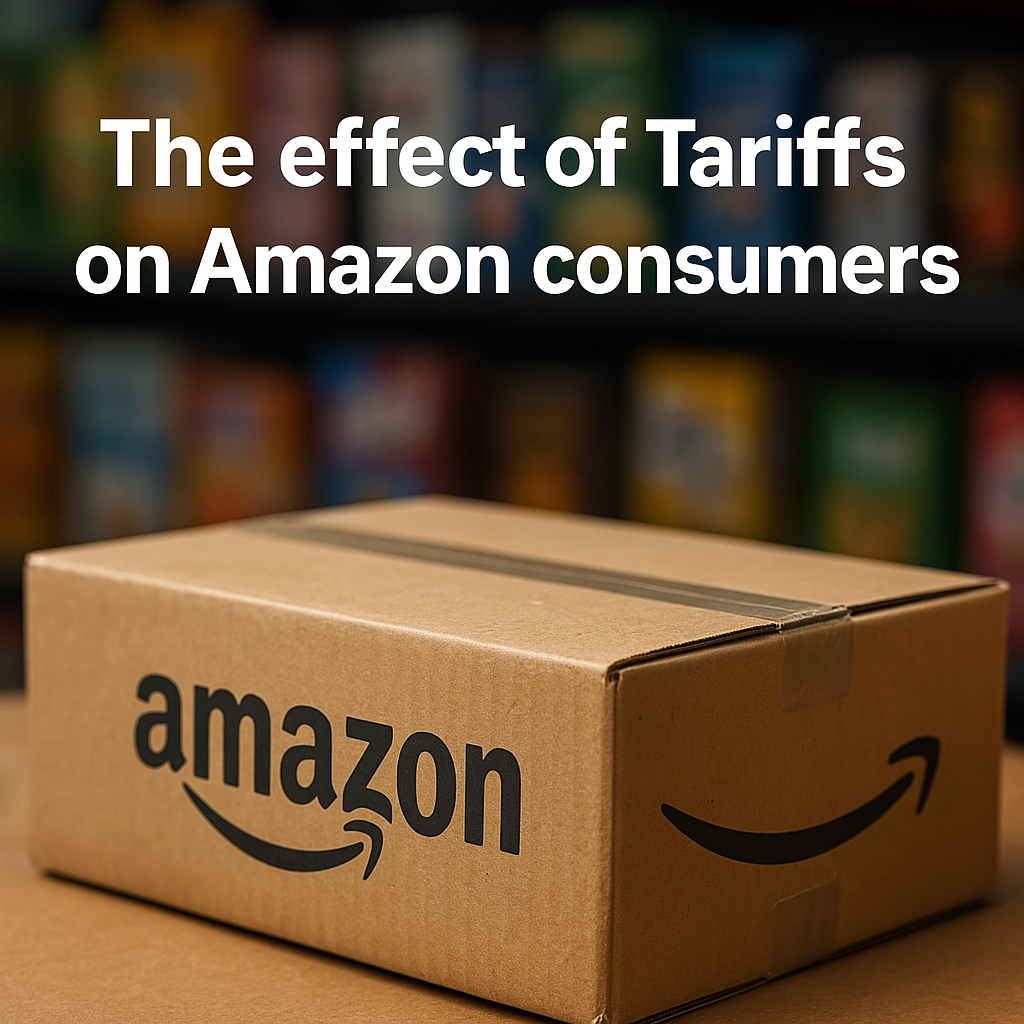

There has been a lot of misunderstanding around tariffs and how they affect businesses or consumers. Even those who try to simplify and explain the issue often end up confusing it further—either by failing to clarify who actually pays the tariffs or by inserting personal perspectives instead of taking a holistic approach.
The clearest explanation in the media by “ecommerce pundits” is that the importer pays the tariffs.This is true but misses an important distinction: the importer is not necessarily located in the country where the product is being imported.
In the case of the US (as you’ll see below), a majority of the importers are outside of the US. In fact, only 38% of Amazon sellers are based in the US. This number is likely even lower, considering many foreign importers use a US-domiciled address—despite not technically being based in the country.
The real payer of tariffs is the entity importing the goods, which could be located in any country. However, based on our interviews with major sellers, much of the tariff cost is eventually passed on to the customer.In a seller’s profit and loss spreadsheet, tariffs are included in the COGS (Cost of Goods Sold). To maintain consistent profit margins, sellers will need to raise their product prices.
Nearly 100% of the sellers we interviewed stated they won’t proactively use tariffs as a reason to increase their prices. Instead, they plan to hold out with their existing inventory, hoping their competitors run out of stock and raise their prices first.
One way or another—if not immediately, then gradually—the entire cost of tariffs will be passed on to the consumer. There’s no other logical or mathematical outcome.
Even for my own brand, the tariffs would be unsustainable, and I would need to increase prices gradually. The only long-term solution would be to manufacture within the US, which is exactly what the government wants.That, however, is a political debate and outside the scope of this post (impossible for our brand anyway, as we rely on a Himalayan plant product).
The political aim behind these tariffs seems to be to kick-start domestic manufacturing. But the aim of this blog post is not to discuss politics—it’s to highlight the effect of tariffs on recent online sales data.
Why We’re Uniquely Positioned to Share This
A bit of background: we’re proud to have been named an “Advanced Amazon Partner” within the Amazon ecosystem.This badge is awarded to the top 5% of software companies or agencies that manage Amazon ads and FBA (Fulfilled by Amazon) revenues.
In practical terms, we process a few billion USD in GMV (Gross Merchandise Value) annually for our clients. Since we also analyze their competitors to price products competitively, we often dig even deeper to get accurate insights into sales, revenues, average prices, and profit margins.
Given the scale of our AI automation software—and our no-touch onboarding process—we analyze nearly the entire Amazon ecommerce ecosystem at least once a month.
I recently aggregated anonymized seller data for the latest month in the US and ran some simulations to estimate the impact on average product prices if tariffs go live.What the Data Shows
One of the most interesting charts shows seller distribution by country in the US Amazon marketplace.You’ll immediately notice that China is the biggest source of Amazon sellers, accounting for slightly more than 20% more than even US-based sellers.
(Charts are interactive—you can click on them.)
These are the total revenues and then an additional column shows the average price of the product for a seller from that country.
Some interesting facts from these data:
Sellers from these countries sell the most expensive items:
The most surprising entries are Ghana and South Africa. Upon investigation, I found that Ghana has only two sellers selling in the US, and their high-priced handicrafts (averaging over $150) are skewing the average.
Sellers from these countries sell the cheapest items:
I collected all the data in one spreadsheet, put the average price and added a calculated column with the increase in average price due to the tariffs on that country.I assumed 10% of all countries except few that have exceptionally high tariff rates.This is also with the optimistic projection that sellers in US will have only 10% import tariffs but the ground truth is that almost 80% of US sellers have their source in China which would mean they would also be hit with whatever tariff at that point of time.
Adding up all the data and averaging the approximate increase in price, we can see that the minimum percentage increase in good prices is 9.9%This is a one off increase since we are not increasing the tariff prices every single month.There are few more caveats in this data which has been simplifiedThere are plenty of unknown and unregistered sellers with no country, sellers around China (eg Hong Kong, Singapore, Taiwan, Vietnam etc) all source their goods majorly from China as well
Given all these uncertainties and the effect on inflation and cost of goods, we are confident this turbulent phase of market will eventually settle down.
(Raw data of total sales and avg price by country) https://www.aihello.com/resources/blog/the-effect-of-tariffs-on-amazon-consumers/


